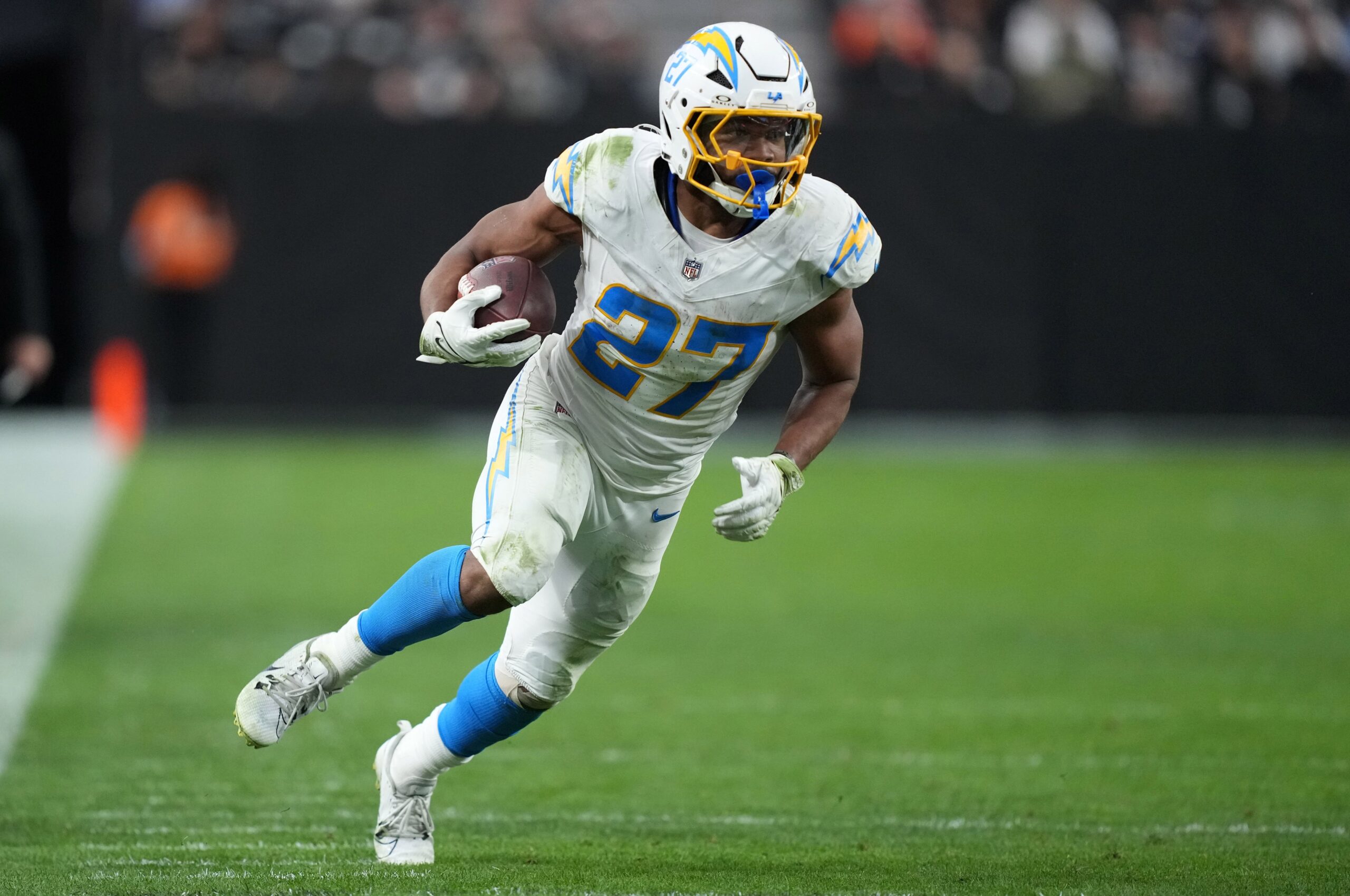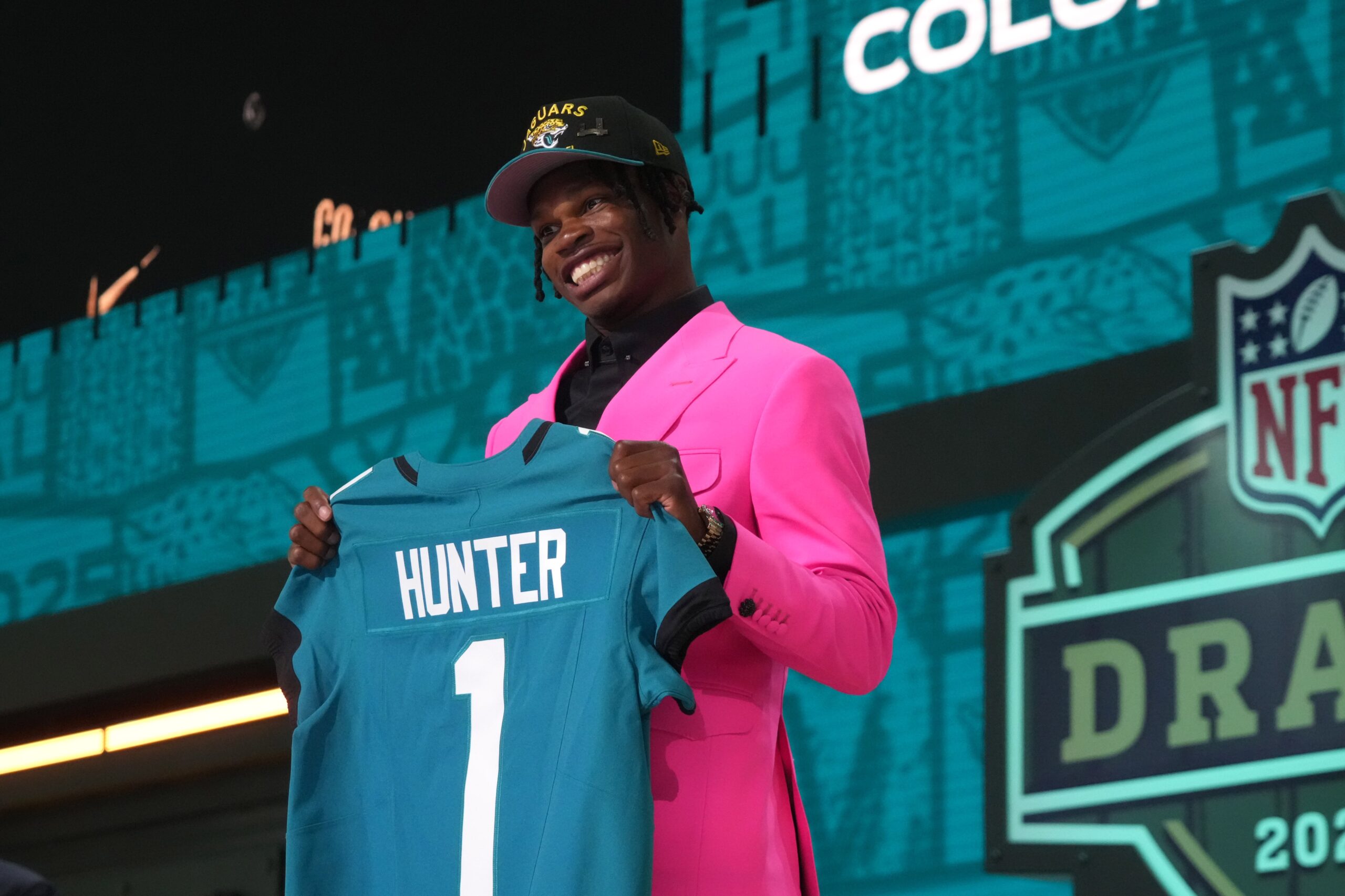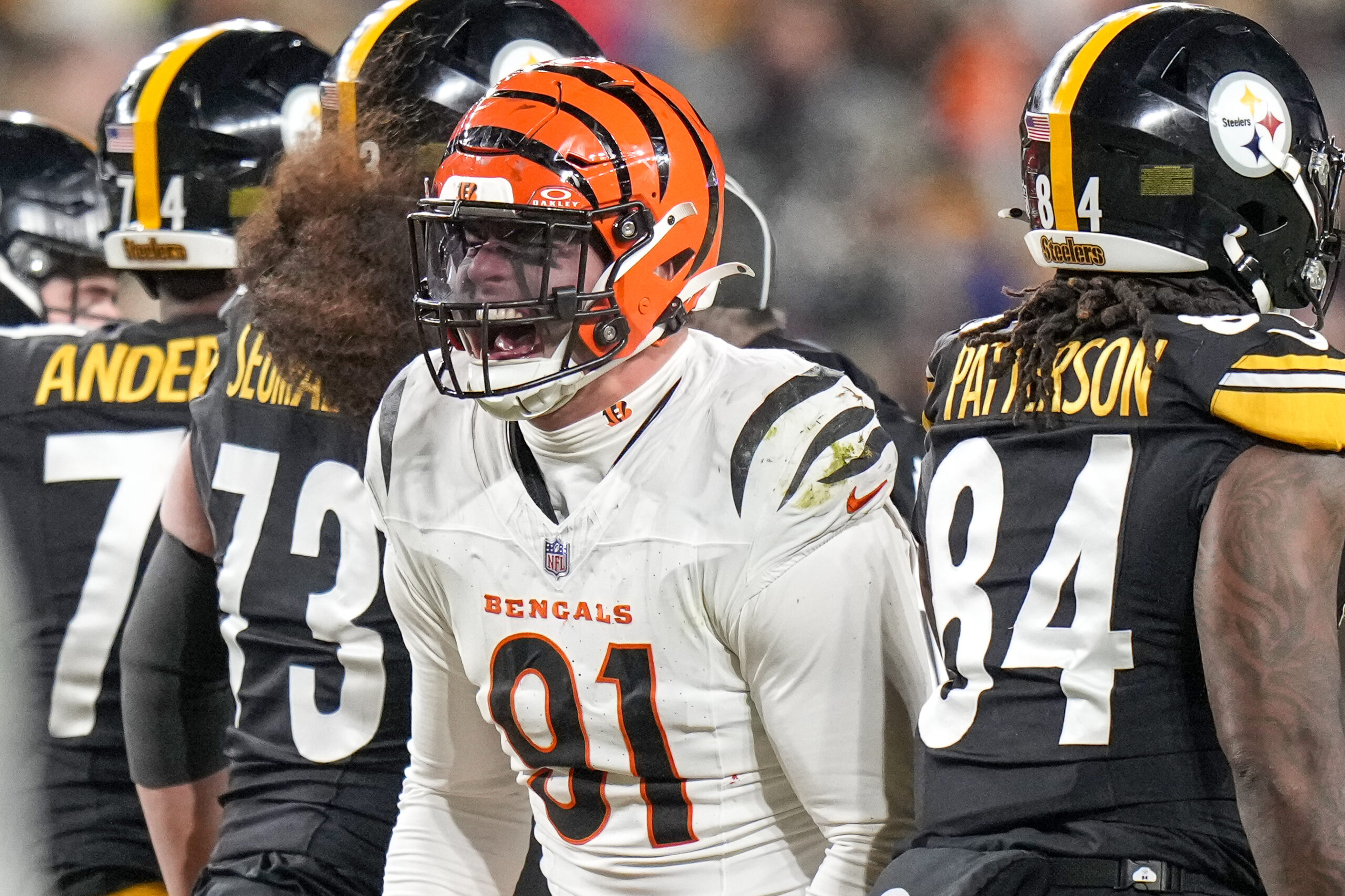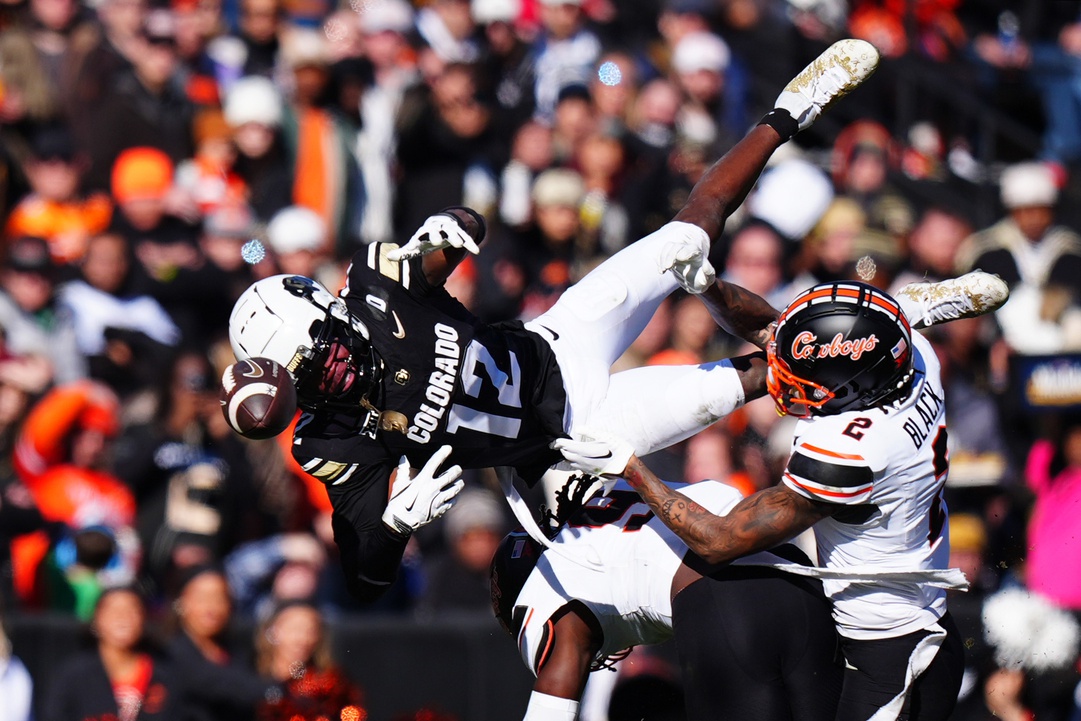NFL Analysis
3/15/24
7 min read
Derrick Henry, Lamar Jackson Will Bring Out Best In Each Other With Ravens
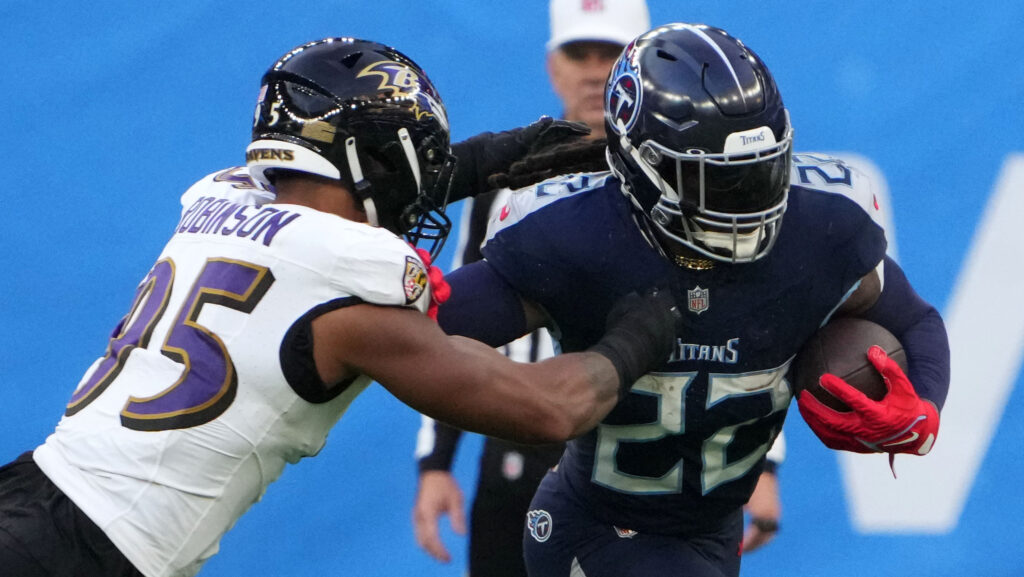
Some free agent-team fits just make too much sense. But even the most obvious matches don’t often become reality. One of them did come together when the Baltimore Ravens signed Derrick Henry to a two-year deal worth $16 million with $9 million guaranteed.
The Ravens attempted to trade for Henry before last season's trade deadline, but nothing materialized. Now, Henry slides in as the top back next to Lamar Jackson in what could be an exciting backfield duo.
Carrying The Offense's Weight
Few running backs have been more impactful than Henry in the past few seasons, even while Tennessee's offense had little else going for it. Among 23 running backs with at least 200 carries last season, Henry ranked 11th in yards per carry despite ranking last in yards before contact per carry, per TruMedia.
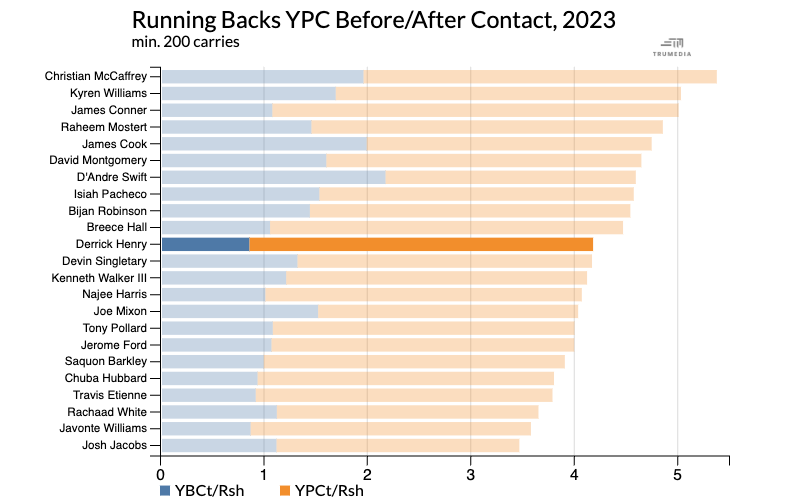
Henry averaged just 0.88 yards before contact per rush behind an offensive line that was 21st in run block win rate. And 49.6 percent of Henry’s carries came against a stacked box with eight or more defenders. There was little threat of anything else on offense. Of Henry’s first-down runs, 53.5 percent went into a stacked box. The next highest back was at 48.8 percent with just five backs other than Henry above 40 percent.
That’s a lot to put on one back, especially one who has led the league in carries in four of the past five seasons. The only reason it wasn’t five consecutive seasons was Henry was injured midway through 2021 while he was on pace to have the most carries of his career. In the past four seasons, Henry has 163 more carries than any other running back.
There’s certainly some risk in signing a back with that many carries, especially since he turns 30 in January.
Raheem Mostert was the only running back in 2023 to reach 200 carries at 30 or older. The last running back to do that before Mostert was Adrian Peterson in 2019. Peterson and Frank Gore are the only two backs with multiple such seasons in the past decade.
It would be a lot to ask of Henry to repeat that type of performance — though his decline has been predicted multiple times during his career and has yet to truly come — but the benefit of Henry on the Ravens is that he shouldn’t be needed to carry the load in that way.
Schematic Advantages
The Ravens' offensive line is in flux, but it ranked fifth in run block win rate last season and created 1.61 yards before contact per running back carry, which ranked sixth.
Putting Henry in Baltimore's backfield is a small schematic shift from what he did in Tennessee. The Ravens actually used a lower rate of 11 personnel than the Titans last season. Still, they spread defenses out more with their formations and better blocking to take defenders near the line out of the play.
Off the bat, that will ask less of Henry, who won’t be running full speed into a wall of defenders for the sake of establishing the run.
Henry should also benefit from the open style of the Ravens’ shotgun run game. Baltimore was in the gun on 83.8 percent of its offensive snaps in 2023, the league's fourth-highest rate. Meanwhile, the Titans were in shotgun 62.8 percent of the time, ranked 24th.
Throughout his career, Henry has been more of an under-center runner in Tennessee’s offense, which kept the play-action-heavy approach even after Matt LaFleur and Arthur Smith left.
In the past four seasons, just 19.7 percent of Henry’s runs have come out of shotgun. But statistically, he’s been a better and more efficient shotgun runner.
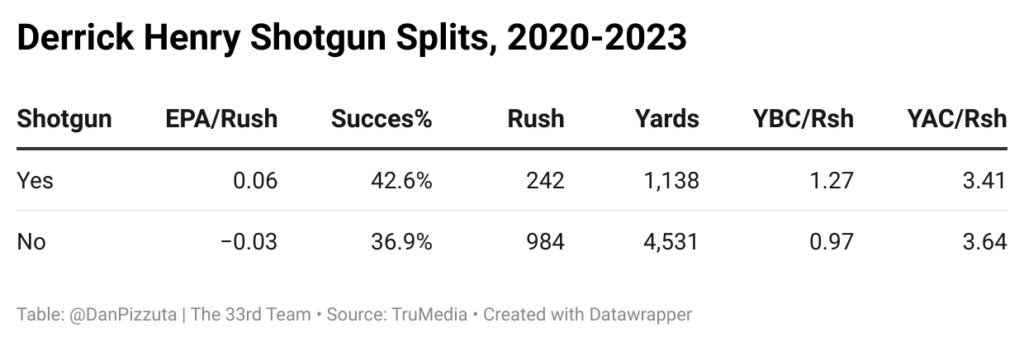
In that span, Henry’s 0.06 EPA per rush from the shotgun is tied with Aaron Jones for the second-highest mark among running backs, behind former Raven J.K. Dobbins.
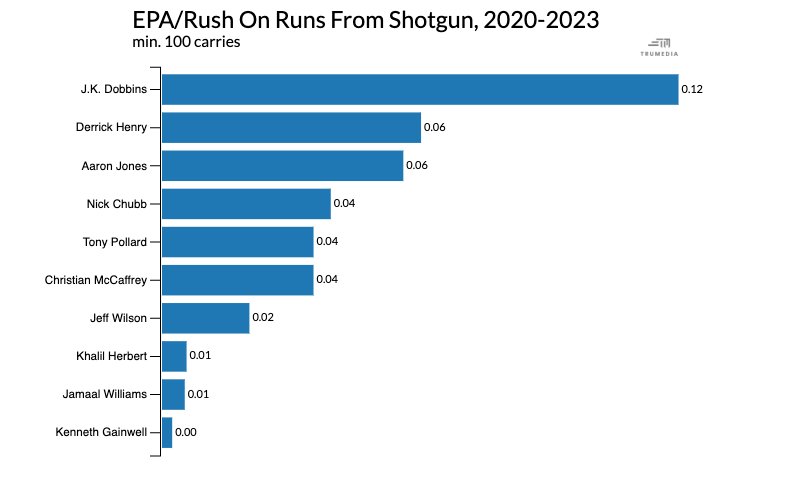
The Ravens won't rework their run game to look like what Henry has done in the past — nor do they have to — but if they do want to have some of those under-center concepts, they could add them to their pistol packages. Baltimore had the sixth-highest rate of snaps in pistol, at 8.3 percent. That won't be a massive piece of the offense, but it won’t have to be.
Tennessee played with some pistol looks throughout the 2023 season. Henry had 42 carries for 192 yards and a touchdown from pistol after having six total carries from the formation in the previous three seasons.
Henry is often viewed as a plodding back because he’s bigger than most opposing linebackers, but he can move. He’s also more effective on runs to the outside, where he can find space to gain steam and turn upfield. That creates a longer path to the line of scrimmage and makes Henry harder to bring down once he has momentum.
Last season, he was third in DVOA on runs outside the tackles among 12 backs who had at least 50 such carries. He should get more of those opportunities in Baltimore, as the Ravens were 12th in runs outside the tackles.
While in Tennessee, the weight of the run game was put on Henry due to his skill and the lack of a second option. Last year, Tyjae Spears was the first Henry backup to hit 100 carries in a season outside of the injury-shorted 2021, yet Henry still had 73.1 percent of the Titans’ running back carries. That’s virtually unheard of in an era of running back rotations and split backfields.
Plenty of Help in Baltimore
In Baltimore, Henry’s main running mate is Lamar Jackson, who is coming off his second MVP season. Jackson’s running ability already stresses the defense in how they play the quarterback.
Jackson had 71 designed rushing attempts last season, which would already make him one of the most involved Henry teammates in the run game, and that doesn’t include scrambles.
Theoretically, more RPOs could be useful to Henry since any “give” would mean it’s a favorable look to run against. Adding Henry to a mesh point with Jackson can make the defense wrong no matter how it’s defended.
Between Jackson and Henry, this might be the hardest running duo to bring down. Henry has made a career of running through and/or over defenders, while Jackson’s agility and spatial awareness help him avoid taking big hits in the open field.
Then, there are the other running backs who could spell Henry. Keaton Mitchell was one of the league’s most explosive backs when on the field. He averaged 8.4 yards per carry, with 25.5 percent of his rushing attempts gaining 10 or more yards. Mitchell tore his ACL in Week 15, but if he returns to full health, the Ravens could have an incredible thunder-and-lighting duo.
Baltimore also has Justice Hill, who has flashed when given the opportunity and served a bigger role at the end of the season and into the playoffs. It’s arguable Mitchell and Hill separately would be the best back Henry has had behind him in his career.
If defenses overcommit to stopping the run, the Ravens now have a passing game that can take advantage of the open space. Last season, Jackson was second in EPA per play (0.51) on dropbacks with eight or more defenders in the box.
For this to be a success, Henry doesn’t have to be the back he’s been throughout his career. One of the positives of this signing is that he won’t be asked to do that heavy lifting.
Henry and the Ravens have the potential to bring the best out of each other, while other pieces of the offense are capable of taking over if needed.
It’s just another element added to this Ravens offense. That should scare opposing defenses — and that’s before they even try to make a tackle.


